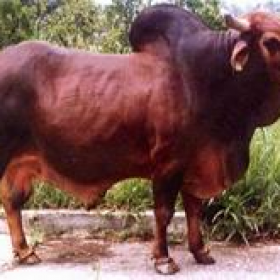|
Study on early, drought tolerance hybrid maize and cultivation practices in Southern Vietnam (PhD Thesis (2013), Trương Vĩnh Hải, Email: hai.tv@iasvn.org )
Thứ ba, 24-06-2014 | 09:56:47
|
|
ABSTRACT
Drought stress that causes a significant reduction in maize productitivity, addresses the unpreditable forecast on incidence, severity level and occurrence frequences. Therefore, drought tolerance breeding on maize hybrids has always become an interest subject to be discussed. Otherwise, planting density and fertilizer levels are considered as the key factors to mainly affect maize productivity. Optimum planting density and appropriaate fertilizer application are essential to offer desirable grain yield.
Sixty two maize inbred lines for drought tolerance was evaluated and considereded as breeding materials. Phenotyping under field condition was designed in RCBD with three replications. Genetic divergence analysis of the inbred lines was conducted via 20 polymorphic SSRs. Genotype x environment interaction was recorded through BIPLOT dendrogram and the outputs by Eberhard & Russels model, and AMMI’s BSTAT. Treatments on cultivation practices were designed in Split plot and RCBD with 3 replications. Two different main plots on regular irrigation and drought stress at seedling and flowering stages were applied. The ASI and grain yield were mainly phenotyped to assess the drought stress tolerance.
Through UPGMA clustering via 20 polymorphic SSRs; 62 inbred maize genotypes come from the IAS gene bank maize were classified into four genetic distant clusters based on SSRs electrophoresis. The average allele number of 2.63 for each SSR marker was noticed with the PIC value of 0.53. Marker umc1345 and phi99852 expressed the highest PIC value of 0.76 and 0.44, respectively. The prominent primer umc1354 on chromosome 1 linked to five alleles.
There were 80 new hybrid crosses have been created based on their genetic distance value. Some of them offered the heterosis on their higher grain yield with desirable characters as compared to the leading hybrid C.919 cultivar in the large scale areas of Southern Vietnam. The crosses highly overyielded and exhibited their drought tolerance could be identified as BC3F3-26, BC3F3-28, BC3F3-1. Early growth duration (92-93 days) and high yielding genotypes were identified in two crosses as VE8 x BC3F3-26 and VK1 x NK67-2 under normal and drought stress conditions.
In the drought condition, the yields of VK1 x NK67-2, VE8 x BC3F3-1 and VE8 x BC3F3-26 varied from 5.30 to 6.68 ton per ha, as compared to the check variety C.919 (4.69 ton/ha). In the BaRia - Vung Tau trial, the drought index of hybrid genotypes as VK1 x NK67-2, VE8 x BC3F3-26 and D1 x TB61 were 1.12972; 1.01449 and 1.09722, respectively as compared to two checks C.919 (0.89837) and P.30Y87 (1.18049).
The BIPLOT dendrogram showed that genotypes VK1 x 30D-2, D1 x BC3F3-14, D12 x D1, D1 x TB61, D1 x BC3F3-28 and D12 x 30D-1 exhibited their yield stability via multilocational yield trial in 2011. They also were the most adaptive to variuos environments with the grain yield obtaining from 7.18 to 7.78 tons ha-1.
Of ten spacing treatments, the grain yield was highly obtained in the inter-spacing of 50 to 60 cm, intra-spacing of 25 to 30 cm. The lowest grain yields was recorded at the highest density (100,000 plants ha-1). Treatment of 66,666 plants ha-1 obtained the best productivity in case of narrow rows spacing rather than wide ones. Grain yield could obtained 8.44 tons ha-1.
NPK treatments were set up and conducted at Ba Ria and Dak Nong. Six treatments were discussed as followed:
The rates of NPK fertilizer treatments of 150 – 180 kg N + 90-100 kg P2O5 + 60-70 kg K2O ha-1 were pinpointed to attain better yields and higher income. Supplementing of 5-10 tonnes organic fertilizer per hectare, could reduce the amount of NPK application, increase grain yields.
Average yield of VK1 x NK 67-2 (namely MN-1) for all sites in two areas was recorded of 6.43 ton/ha as compared to C.919 check (6.04 ton/ha) in the 2011 autumn-winter. The average yield of MN1 in the 2011-2012 winter-spring obtained 7.68 ton/ha.
CONCLUSIONS
|
|
|
|
[ Tin tức liên quan ]___________________________________________________
|


 Curently online :
Curently online :
 Total visitors :
Total visitors :